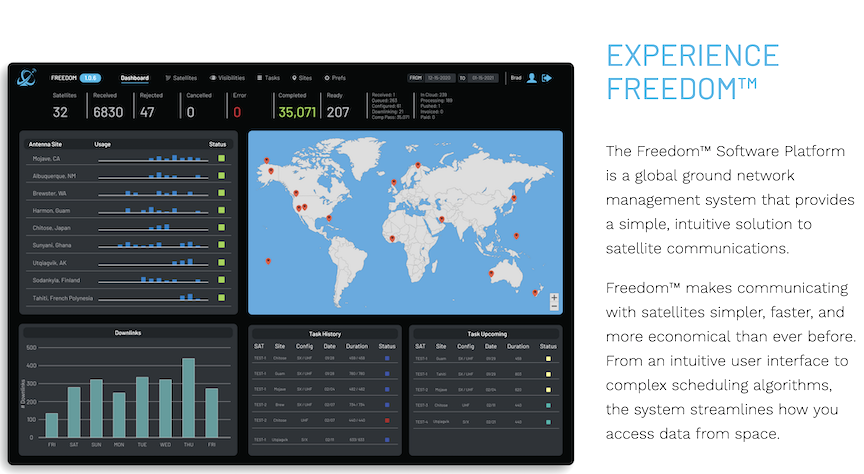
ATLAS Space Operations has received a Small Business Innovation Research (SBIR) grant to advance its machine-to-machine learning capability. The ATLAS SBIR involves the use of over one billion data points from all aspects of the ATLAS communications platform to improve reliability and performance. Antenna tasking, equipment monitoring, and communications optimization are all being improved through continuous machine-to-machine learning protocols.
ATLAS’ mission is to go beyond hardware modernization by using software to optimize their services. Using the Freedom™ software platform, ATLAS has developed its software to automatically analyze trends in its communications network. This means that standalone metrics such as site reliability, ground station infrastructure performance, and antenna scheduling can be viewed as a whole.
The resulting improvement is that information from one data stream can inform and shape another. For example, hardware data can be analyzed alongside communications metrics in order to explore possible opportunities and predict challenges ahead of time. This effort stems from a common goal: automatic communications analysis, modification, and improvement for future-friendly space communications.
“This initiative demonstrates the Freedom™ software platform’s ability to use machine learning to improve our performance, and it is a testament to our long-standing commitment to leading with software,” said Ed McCarty, VP of Global Sales at ATLAS. McCarty explained, “Think about the smart phone in your pocket. We expect regular software updates to happen automatically and seamlessly to improve our user experience.”
McCarty goes on to provide more details, “This project accomplishes a similar capability for our clients in the space communications arena. By taking information from across many sources and integrating it to improve offerings for our clients, we are able to predict challenges ahead of time. Hence, we are optimizing our equipment, and avoiding unnecessary down-time—the best part is, it’s happening through machine-to-machine interfaces, and it is baked into our offerings.”
